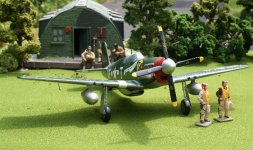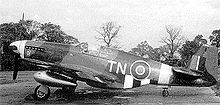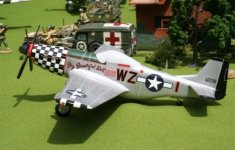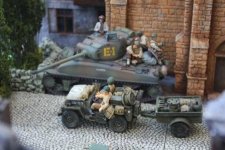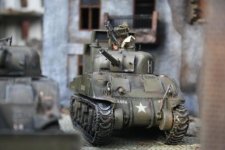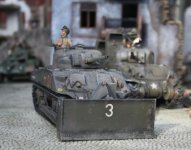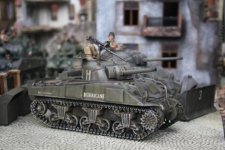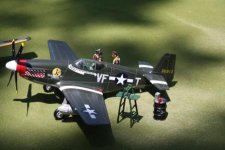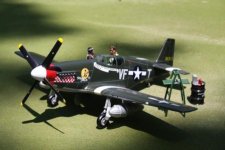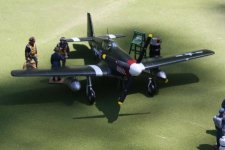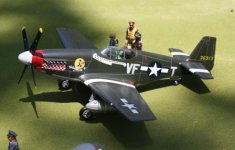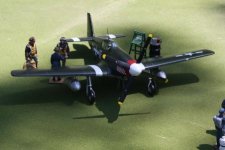panda1gen
Colonel
- Joined
- Jul 29, 2005
- Messages
- 8,100
Garand's rifle was originally chambered for the .276 Pedersen cartridge,[25] charged by means of 10-round clips. Later, it was chambered for the then-standard .30-06 Springfield. With this new cartridge, the M1 had a maximum effective range of 440 yards (400 m), with the capability of inflicting a casualty with armor-piercing ammunition well beyond 875 yards (800 m). Because of the larger diameter of the .30-06 cartridge, the modified magazine held only eight rounds.
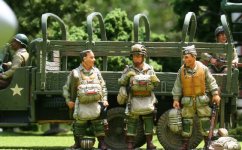
Garand's original design for the M1 used a complicated gas system involving a special muzzle extension gas trap, later dropped in favor of a simpler drilled gas port. Because most of the older rifles were retrofitted, pre-1939 gas-trap M1s are very rare today and are prized collector's items.[24] In both systems, expanding gases from a fired cartridge are diverted into the gas cylinder. Here, the gases met a long-stroke piston attached to the operating rod. The operating rod was therefore pushed rearward by the force of this high-pressure gas. Then, the operating rod engaged a rotating bolt inside the receiver. The bolt was attached to the receiver via two locking lugs, which rotated, unlocked, and initiated the ejection of the spent cartridge and the reloading cycle when the rifle was discharged. The operating rod (and subsequently the bolt) then returned to its original position.
The weight of the M1 varies between 9.5 lb (4.31 kg) and 10.2 lb (4.63 kg) unloaded (depending on sling type and stock wood density)--a considerable increase over the previous M1903 Springfield. The length was 43.6 inches (1,107 mm). The rifle is fed by an "en bloc" clip which holds eight rounds of .30-06 Springfield ammunition. When the last cartridge is fired, the rifle ejects the clip and locks the bolt open. Clips can also be manually ejected at any time. The "en-bloc" clip is manually ejected by pulling the operating rod all the way to the rear, and then depressing the clip latch button. Much criticized in modern times, the en-bloc clip was innovative for its era. The concept of a disposable box magazine had not been embraced and en-bloc clips were cheap and reliable. It was even harder and slower to reload than the M1903 rifle. Contemporary rifles with the ability to easily top-off a magazine included the Johnson M1941, the obsolete Krag-Jørgensen [26] and the Lee-Enfield No1 and No4.
The rifle's ability to rapidly fire powerful .30-06 rifle ammunition also proved to be of considerable advantage in combat. In China, Japanese banzai charges had previously met with frequent success against poorly-trained Chinese soldiers armed with bolt-action rifles. Armed with the M1, U.S. infantrymen were able to sustain a much higher rate of fire than their Chinese counterparts. In the short-range jungle fighting, where opposing forces sometimes met each other in column formation on a narrow path, the penetration of the powerful .30-06 M2 cartridge enabled a single U.S. infantryman to kill up to three Japanese soldiers with a single round.[26]
Ejection of an empty clip created a distinctive metallic "pinging" sound.[27] In World War II, reports arose in which German and Japanese infantry were making use of this noise in combat to alert them to an empty M1 rifle in order to 'get the drop' on their American enemies. The information was taken seriously enough that U.S. Army's Aberdeen Proving Ground began experiments with clips made of various plastics in order to soften the sound, though no improved clips were ever adopted.[28]
The M1 Garand was one of the first self-loading rifles to use stainless steel for its gas cylinder, in an effort to prevent corrosion. As the stainless metal could not be parkerized, these gas cylinders were given a stove-blackening that frequently wore off in use. Unless the cylinder could be quickly repainted, the resultant gleaming muzzle could make the M1 Garand and its user more visible to the enemy in combat.[26] The M1 Garand was designed for simple assembly and disassembly to facilitate field maintenance. It can be field stripped (broken down) without tools.[29]
The Garand is loaded with a full clip of eight rounds. Once all eight rounds are expended, the bolt will be automatically locked back and the clip ejected (with a distinct metallic ping), readying the rifle for the insertion of a fresh clip of ammunition.[25] Compared to contemporary detachable box magazines, the M1's "en bloc" clip is light, simple, and only has to be oriented with the rounds pointing forward prior to charging the rifle (the clips have no top or bottom).
Once the clip is inserted, the bolt snaps forward on its own as soon as pressure is released from the clip, chambering a round and leaving it ready to fire.[30][31] It is advisable for the operator to ride the bolt forward with his hand (in order to prevent the bolt from closing on his thumb, resulting in "Garand thumb" or "M1 thumb"), and to strike the operating rod handle with his palm to ensure the bolt is closed.[31][32]
The M1's safety is located at the front of the trigger guard. It is engaged when it is pressed rearward into the trigger guard, and disengaged when it is pushed forward and is protruding outside of the trigger guard.[32] Contrary to widespread misconception, partially expended or full clips can be easily ejected from the rifle by means of the clip latch button.[32] It is also possible to load single cartridges into a partially loaded clip while the clip is still in the magazine, but this requires both hands and a bit of practice. In reality, this procedure was rarely performed in combat, as the danger of loading dirt along with the cartridges increased the chances of malfunction, instead, it was much easier and quicker to simply manually eject the clip, and insert a fresh one,[33] which is how the rifle was originally designed to be operated.[26][28][31] Later, special clips holding two or five rounds became available on the civilian market, as well as a single-loading device which stays in the rifle when the bolt locks back.

Garand's original design for the M1 used a complicated gas system involving a special muzzle extension gas trap, later dropped in favor of a simpler drilled gas port. Because most of the older rifles were retrofitted, pre-1939 gas-trap M1s are very rare today and are prized collector's items.[24] In both systems, expanding gases from a fired cartridge are diverted into the gas cylinder. Here, the gases met a long-stroke piston attached to the operating rod. The operating rod was therefore pushed rearward by the force of this high-pressure gas. Then, the operating rod engaged a rotating bolt inside the receiver. The bolt was attached to the receiver via two locking lugs, which rotated, unlocked, and initiated the ejection of the spent cartridge and the reloading cycle when the rifle was discharged. The operating rod (and subsequently the bolt) then returned to its original position.
The weight of the M1 varies between 9.5 lb (4.31 kg) and 10.2 lb (4.63 kg) unloaded (depending on sling type and stock wood density)--a considerable increase over the previous M1903 Springfield. The length was 43.6 inches (1,107 mm). The rifle is fed by an "en bloc" clip which holds eight rounds of .30-06 Springfield ammunition. When the last cartridge is fired, the rifle ejects the clip and locks the bolt open. Clips can also be manually ejected at any time. The "en-bloc" clip is manually ejected by pulling the operating rod all the way to the rear, and then depressing the clip latch button. Much criticized in modern times, the en-bloc clip was innovative for its era. The concept of a disposable box magazine had not been embraced and en-bloc clips were cheap and reliable. It was even harder and slower to reload than the M1903 rifle. Contemporary rifles with the ability to easily top-off a magazine included the Johnson M1941, the obsolete Krag-Jørgensen [26] and the Lee-Enfield No1 and No4.
The rifle's ability to rapidly fire powerful .30-06 rifle ammunition also proved to be of considerable advantage in combat. In China, Japanese banzai charges had previously met with frequent success against poorly-trained Chinese soldiers armed with bolt-action rifles. Armed with the M1, U.S. infantrymen were able to sustain a much higher rate of fire than their Chinese counterparts. In the short-range jungle fighting, where opposing forces sometimes met each other in column formation on a narrow path, the penetration of the powerful .30-06 M2 cartridge enabled a single U.S. infantryman to kill up to three Japanese soldiers with a single round.[26]
Ejection of an empty clip created a distinctive metallic "pinging" sound.[27] In World War II, reports arose in which German and Japanese infantry were making use of this noise in combat to alert them to an empty M1 rifle in order to 'get the drop' on their American enemies. The information was taken seriously enough that U.S. Army's Aberdeen Proving Ground began experiments with clips made of various plastics in order to soften the sound, though no improved clips were ever adopted.[28]
The M1 Garand was one of the first self-loading rifles to use stainless steel for its gas cylinder, in an effort to prevent corrosion. As the stainless metal could not be parkerized, these gas cylinders were given a stove-blackening that frequently wore off in use. Unless the cylinder could be quickly repainted, the resultant gleaming muzzle could make the M1 Garand and its user more visible to the enemy in combat.[26] The M1 Garand was designed for simple assembly and disassembly to facilitate field maintenance. It can be field stripped (broken down) without tools.[29]
The Garand is loaded with a full clip of eight rounds. Once all eight rounds are expended, the bolt will be automatically locked back and the clip ejected (with a distinct metallic ping), readying the rifle for the insertion of a fresh clip of ammunition.[25] Compared to contemporary detachable box magazines, the M1's "en bloc" clip is light, simple, and only has to be oriented with the rounds pointing forward prior to charging the rifle (the clips have no top or bottom).
Once the clip is inserted, the bolt snaps forward on its own as soon as pressure is released from the clip, chambering a round and leaving it ready to fire.[30][31] It is advisable for the operator to ride the bolt forward with his hand (in order to prevent the bolt from closing on his thumb, resulting in "Garand thumb" or "M1 thumb"), and to strike the operating rod handle with his palm to ensure the bolt is closed.[31][32]
The M1's safety is located at the front of the trigger guard. It is engaged when it is pressed rearward into the trigger guard, and disengaged when it is pushed forward and is protruding outside of the trigger guard.[32] Contrary to widespread misconception, partially expended or full clips can be easily ejected from the rifle by means of the clip latch button.[32] It is also possible to load single cartridges into a partially loaded clip while the clip is still in the magazine, but this requires both hands and a bit of practice. In reality, this procedure was rarely performed in combat, as the danger of loading dirt along with the cartridges increased the chances of malfunction, instead, it was much easier and quicker to simply manually eject the clip, and insert a fresh one,[33] which is how the rifle was originally designed to be operated.[26][28][31] Later, special clips holding two or five rounds became available on the civilian market, as well as a single-loading device which stays in the rifle when the bolt locks back.




















